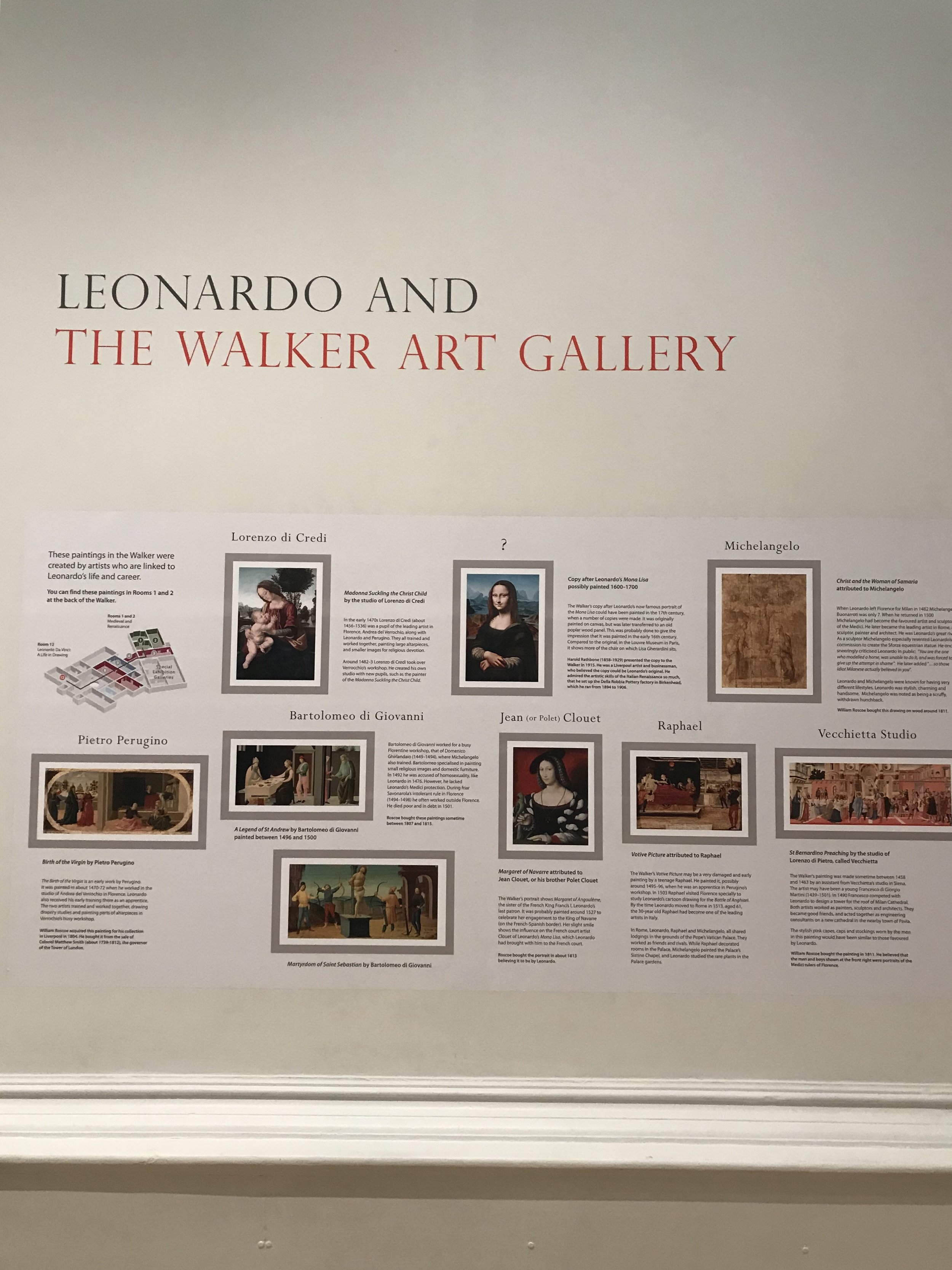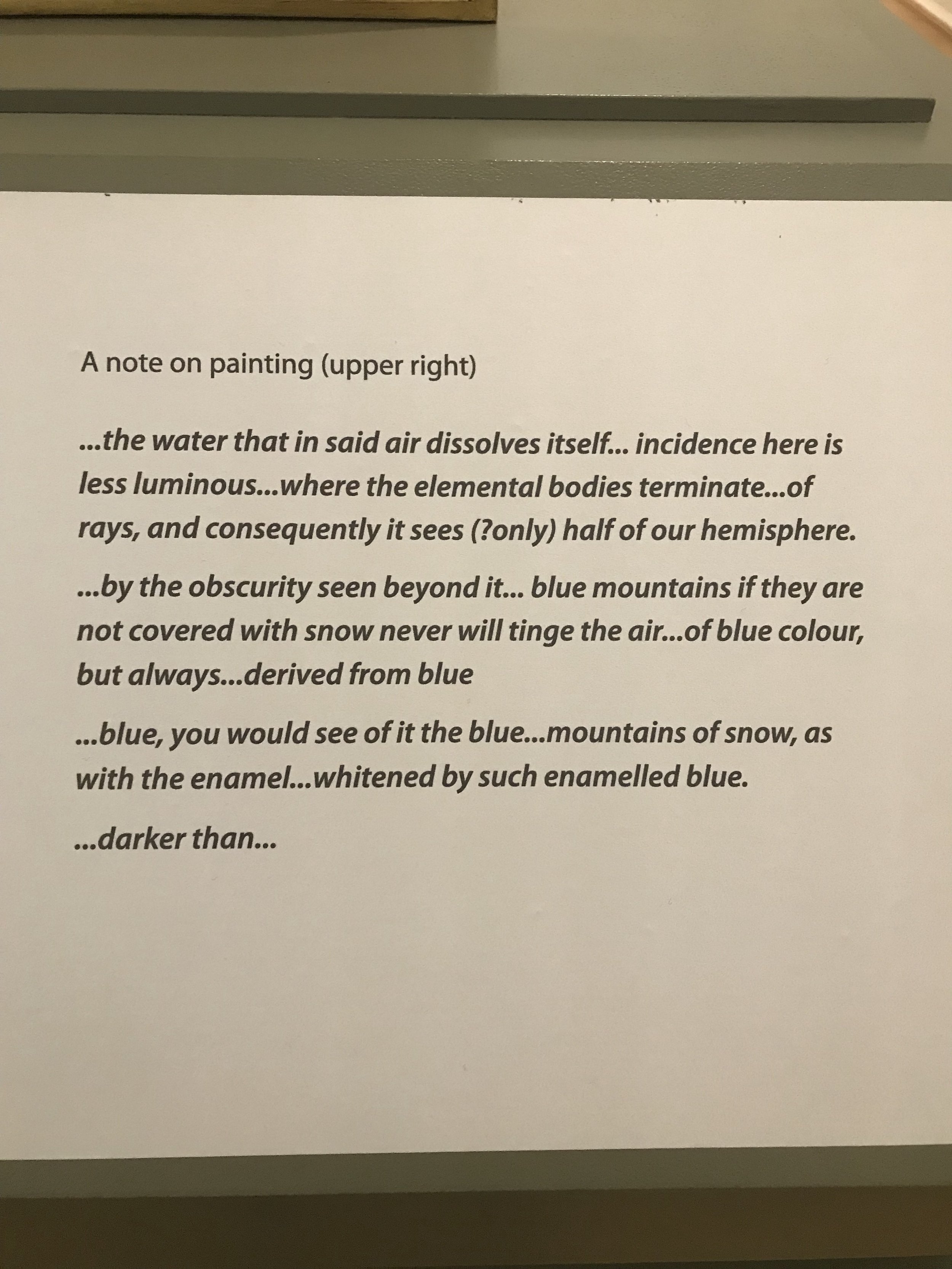As a country wide commemoration of the 500th anniversary of Leonardo da Vinci’s death, the Royal Collection have loaned their Leonardo drawings to different locations, in Leeds; Belfast; Birmingham; Bristol; Cardiff; Derby; Glasgow; Liverpool; Sheffield; Southampton; Sunderland and our very own Manchester! The strategic programming by the Royal Collection means that everyone in England is no more than an hour’s drive away from one of the exhibition venues, each of which contains 12 drawings.
Since the Leonardo drawings arrived back in February, I’ve had countless conversations with the visitors who flocked to MAG, about their experiences of the drawings in the other locations. So after the thirtieth mention of Liverpool’s Leonardo’s, I decided it’s about time I scope it out for myself. I have been wondering how each venue might differ in presentation and how much freedom the Royal Collection gave to the curation. Since MAG’s theme is ‘the body’, what themes have other locations explored and how does each experience differ?
So I took a trip to the Walker Art Gallery in Liverpool….
… my first impressions were WOW, this is BIG…. and quiet (quite different to MAG’s smaller and very busy exhibit- but then this was on a Monday afternoon).
Located in a large, light and airy room on the first floor; it felt as though there were more to see than just twelve drawings.
The exhibition had varying themes, with each work on paper displayed beneath the titles: Deluges; Ideal Heads; The Sforza Monument; Botany; Leda and the Swan; Courtly Life; Anatomy; Landscape; The Madonna and Child with St Anne; Costume Studies.
I was amazed by the range of drawings here, Liverpool’s twelve pieces covered a large scope and like MAG, they also have two double sided pieces, which really means we can count that as fourteen drawings!
The Walker’s displays contextualised Leonardo with links to their own collection, which conveniently contain the famous copy of the Mona Lisa and works by artists such as Pietro Perugino, who was apprenticed to the same workshop at Leonardo and Lorenzo di Credi who had influenced Leonardo and became influenced by him.
There’s a clean and colourful nature to the display, punctuated with insightful quotes about the artist, balanced with hints of red and yellow in the contextual panels which compliment the sepia tones used in some of Leonardo’s pen and ink drawings. I felt like I had not only experienced Leonardo’s handiwork but I that I’d been invited to engage with glimpses of his character and the impact of his studies at a local level.
Many features of the display had been carefully considered, such as the audio guide beside the exhibit entrance and a box of magnifying glasses placed on the benches.
Accessibility was also high on the agenda here with enlarged copies of the tiny drawings and translations of Leonardo’s notes:
As I was leaving, I noticed some small yellow questionnaires which I initially dismissed; no one enjoys answering questions about how far you’ve travelled and why you’re visiting. Then I took a second glance to see what they wanted to know and decided that actually, this is a considered approach from the Walker to learn more about their new audiences and ways of retaining the high numbers.
Aspects of the curation were clearly acknowledged and explained through small discreet signage; making the curatorial decisions more transparent.
At MAG, we’ve been experiencing record breaking visitor numbers, particularly at the weekends with almost 40,000 in the first ten days of the Leonardo exhibition opening! It will probably feel very strange after 6th May when the drawings leave our gallery, will it be a relief or will we miss it?
Overall, the Walker’s exhibition was a great experience and left me feeling like I had learnt something. The displays really instilled a sense of pride in Liverpool and it was so well integrated within the Walker’s collection that it seemed to ‘make sense’ showing the Leonardo drawings here.
Where Liverpool’s exhibition was large and vast, our exhibition at MAG has a more intimate feel. Our small red room creates the atmosphere of entering a secret cave of ancient treasures and this curatorial variance makes for a far more interesting experience of the country wide exhibition.
But you may have to join the queue!






















